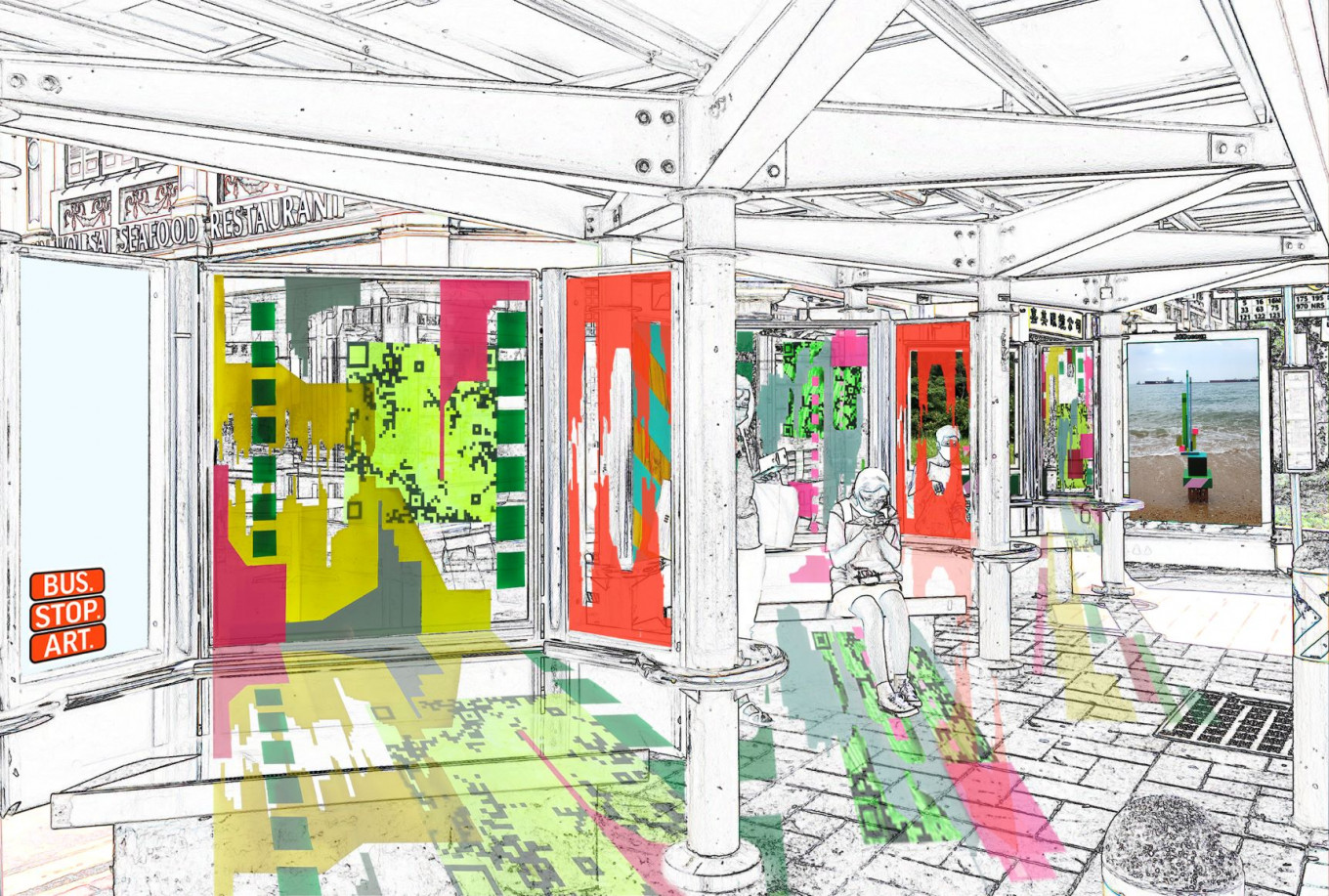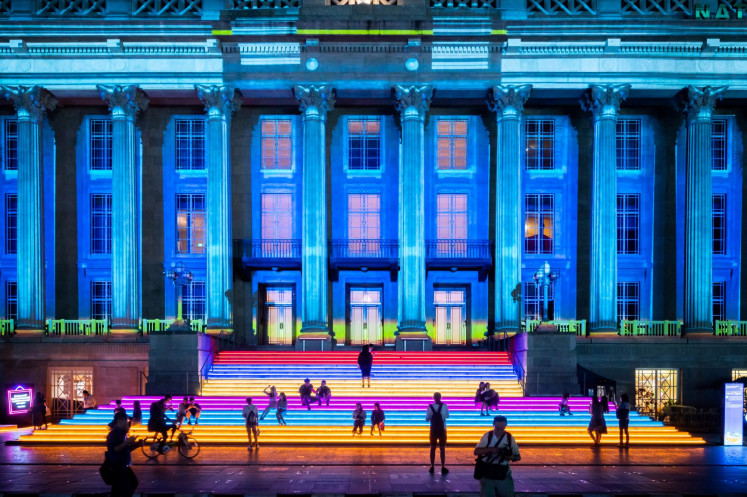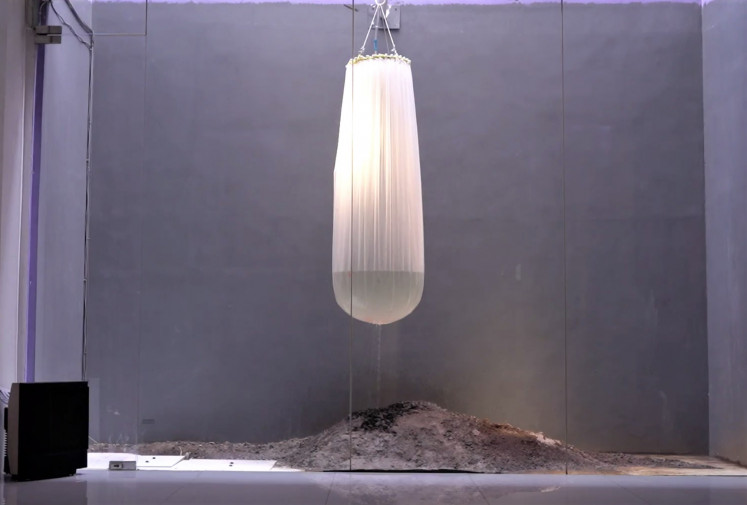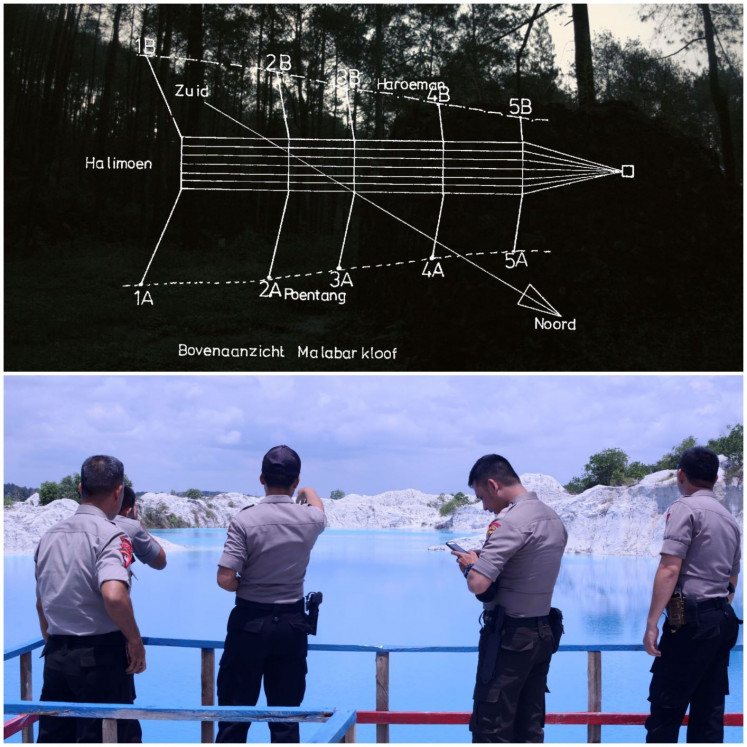Popular Reads
Top Results
Can't find what you're looking for?
View all search resultsPopular Reads
Top Results
Can't find what you're looking for?
View all search resultsSingapore Art Week returns, bigger and closer than ever
Travel restrictions will not keep art-lovers from attending more than 100 events that display the diverse range of works of 300 artists, including Indonesians, and curators worldwide.
Change text size
Gift Premium Articles
to Anyone
Singapore Art Week is underway, bringing art closer to the people under the restrictions of the pandemic from Jan. 22 to 30.
Now in its ninth year, the region’s pinnacle art event has grown in size, branching out for the first time into both the physical and the digital world.
With the theme “Art Takes Over”, the art week will highlight talks and discussion on the future of arts, exhibitions – some held in unconventional spaces, a peep into the collections of art collectors, art fairs, films, and more.
Bright night: People sit on the steps of the National Gallery Singapore, in front of its illuminated facade. The Light to Night Festival will be the marquee event of Singapore Art Week 2021. (Courtesy of the National Gallery Singapore/-)
Organized by the National Arts Council, Singapore Tourism Board and Singapore Economic Development Board, this year’s festival features the largest number of commissioned artworks to date, involving 300 artists and curators worldwide with more than 100 events.
While the majority of events are physical, the organizers have prepared a complementary digital offering.
“The months passed has shown that technology actually allows us to stay connected. This is especially evident in this year’s edition, where collectors and artists continue to ideate and to collaborate virtually to present good works despite being in different geographies,” said Tay Tong, director of sector development for visual arts at the Singapore National Arts Council, at a virtual press conference on Jan. 15.
Other events in the hybrid format that participants could enjoy from the comfort of their homes are “Bus.Stop.Art” – a curated exhibition at bus stops along the route of city bus 175 that comes with downloadable and online activities; and “S.E.A Focus 2021” that showcases contemporary art of Southeast Asia.
Indonesian contemporary artist Arahmaiani will take part in the hybrid event “Free Jazz III. Sound. Walks.” that features collaborative projects to renew appreciation of the outdoors, while Indonesian Wiyu Wahono will be among the major collectors opening their vaults of priceless art in video format for the “IMPART Collectors’ Show”.
Collectors unite: 'Zero Degree' (2017) by artist Deni Ramdani forms part of Indonesian art collector Wiyu Wahono’s collection. (Courtesy of the Singapore Art Week/-)Another two Indonesian visual artists – Natasha Tontey and Riar Rizaldi – present their works at the sixth edition of the multidisciplinary series “State of Motion 2021: [Alternate/Opt] Realities”.
The exhibition, which runs from Jan. 20 until Feb. 21 with the futuristic architecture of Marina One as the backdrop, explores the visually engineered futures conjured up by the science fiction genre and the magical efficacy of its images.
Yogyakarta-based Natasha, 29, responded to the speculative future with Pest to Power (Hama Memberkati; 2019-2021), a multi-channel video installation that chronicles a commune of cockroaches proposing a manifesto in seeking redemption for its kind.
Hong Kong-based artist Riar, 30, whose works focus on the relationship between capital and technology, extractivism and theoretical fiction, presented video installations Kasiterit (2019) and Tellurian Drama (2020). Both works explore image politics, media archaeology and the unanticipated consequences of technologies.
The works, unfortunately, are not available online.
Natasha and Riar talked with The Jakarta Post over email about their works and how their art progressed during these unprecedented times. Below are excerpts from the interviews:
How do you describe your work? What is the idea behind it?
Natasha: It is a question to imagine a future in which humans won’t be the center anymore, but cockroaches play a major role in the ecosystem.
The work is basically composed of the writing and images derived from my research on cockroach activities; whether it was the literature that I found on the internet and books or my communication with the colony of cockroaches in my studio and home.
I’d like to see if there is a possibility of interspecies connection that is actually mutual and how knowledge is shared by multispecies, not for one-sided gratification (which is usually human). Though cockroaches are also blessed by the abundant plastic that humans produce as their source of food, I think this is not the way we imagine a sustainable future. The relationship is supposed to be a symbiotic mutualism, otherwise, we develop the world as a place only for human beings. In my practice, I try to look from the case study of the cockroach and raise the question of what we can learn from them.
Future uncertain: A screengrab from Hong Kong-based Indonesian artist Riar Rizaldi’s video installation 'Kasiterit' (below) shows officials on Bangka Island, Bangka-Belitung province. His other installation, 'Tellurian Drama' (top), narrates the history of Radio Malabar in West Java, which was set up by the colonial government in May 1923. (Courtesy of Riar Rizaldi/-)Riar: The main theme for both works is to think about an alternative when we think about technology, especially modern technology. Kasiterit and Tellurian Drama investigate the human-technology-nature relation by implementing fiction in its presentation.
The idea comes to me usually when I think about specific places/sites. For Kasiterit, I have been thinking a lot about Bangka Island, and I want to make a video work that reflects the dynamic of this little island and observes the fact that the island is actually one of the main actors of global economic flows.
As for Tellurian Drama, it comes from my fascination with radio technology and signals as well as the Indonesian environmental movements under the Soeharto regime and the struggle of indigenous people in West Java.
Your past work is about the speculative future, which fits the theme of State of Motion this year. Is there any newly added thought in your present work?
Natasha: I think the current work is still a practice of speculating on the future. If we reflect on today’s condition, humans are still considered the subject. Or in other words, the center in the ecosystem. ln Pest to Power, I would like to propose a fiction (or maybe some kind of a thought-provoking practice), in which the notion of humanity is reconfigured using the agency of cockroaches.
How is your creative process/artmaking going during this pandemic?
Natasha: After speculating on the future through cockroaches, in this time of the pandemic, I start to look back and observe my ancestral knowledge of the Mapalus culture and how the stone culture in Minahasa [North Sulawesi] is really important.
Stone is deemed an inorganic material, but for the ancient Minahasa people, it is also understood as a live organism. It has its role as the foundation of life. The stones existed before human existence.
Therefore, since the pandemic is really exhausting and we can’t function really well, I have delved into crystal healing and finding my ancestral roots through understanding this Minahasa stone culture.
Despite the travel ban, the massive online migration gave me a chance to meet more people that have the concern to preserve the ancestral culture.
Riar: Kasiterit was conceived of in 2019, way before the pandemic. Tellurian Drama was shot a day before Indonesia (to be precise, Bandung) implemented the pseudo-lockdown. I finished the work entirely just sitting in my room editing the footage, making music and rewriting the script. Friends who collaborated in Tellurian Drama sent their pieces through the internet. The whole process took around two months.
In terms of the working process, to be honest, besides I not being able to get out shooting videos, there's no difference at all […]. The only difference is the emotional rollercoaster that I experience attending digital funerals of friends and families that passed away during this pandemic. (ste)
-- Visit artweek.sg for events and schedules.














